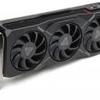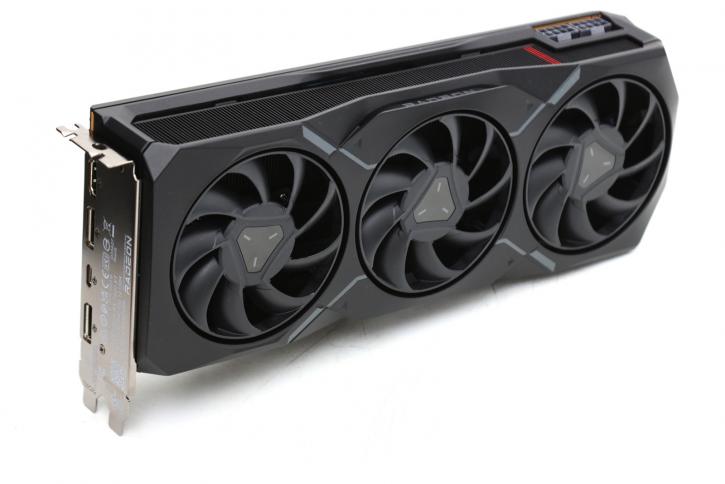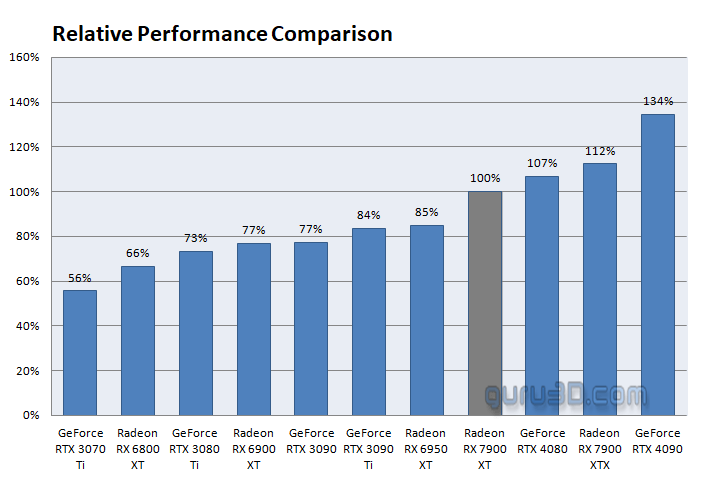Final words and conclusion
Final words
Well, where to begin? First, the obvious, rDNA3's flagship GPU is not competing sufficiently with the NVIDIA flagship 4090. Contradictory enough, that's not necessarily a bad thing, as AMD would have priced the product similarly to the GeForce RTX 4090. The RX 7900 XT is also a bit difficult to position as it has a few weaknesses. When looking at raw shader performance, it's plenty fast ... closing in at the more expensive GeForce RTX 4080. However, the Achilles heel for the Radeon RX 7900 XT is twofold. Firstly, AMD relies heavily (perhaps too much) on the extra cache (infinity cache), and caching does help greatly, but primarily for CPU/fillrate/driver-bound situations .. and that's not at a resolution of 3840x2160. So at resolutions up to 2560x1440, AMD can keep up exceptionally well; however, in Ultra HD, where raw brute performance is needed, AMD's graphics engine has difficulty keeping up with the competition. The second Achilles heel is Raytracing performance. While they increased RT perf overall, AMD is not at the same performance level as NVIDIA as they are making more significant steps with each generational update. The second you enable raytracing in games the combination of these two facts drags down UHD performance in such specific render workloads. So that's the sour part. Now that we have established that as a fact, we need to position the card, and here AMD wins, frame for frame rendered AMD has a cheaper (yeah, I said cheaper, not cheap) solution to offer to you. Not just that, if you look at the performance per watt chart, then AMD's engine is highly efficient. Both thus are massive plusses in my book. Whether or not that is enough for you, we can't say; do keep in mind that AMD's Raytracing performance in ultra HD can be enhanced with technologies such as FSR(2). From a raw shader perspective, this product delivers a substantial performance gain over the previous generation. We must also highlight the generational increase in raytracing speed, albeit AMD made smaller steps than NVIDIA did with ADA. Cheaper, not cheap - even at $899 these cards have entered a price range that is no longer attainable to most people. PC gaming has become progressively more expensive, driving end users to other solutions.
Performance
You've seen the numbers, and we've already let the cat out of the bag. It all comes down to gaming performance and, of course, rendering quality. Yes, the RX 7900 XT provides more value for your money than seen from the 4080, as we're getting close to raw performance levels that easily enable gaming at 4K resolution. Most enthusiast gamers play at UWHD, QHD, or UHD monitor resolutions. This card is designed for precisely that kind of gamer. We do have to say though that DLSS3 for the 4080 has significant appeal.
The old rasterizer engine breaks right through the previous limit of extreme performance. Realistically the 7900 XT often sits at the performance level of a 3090 Ti, and here and there at 4080 levels. That's the correct positioning; that also means that the Radeon RX 7900 XT isn't miles away from the RX 6950 XT. However, compared to the latter, it's far more efficient. Of course, this chart is based on raw shader engine performance; when NVIDIA flicks on Raytracing and DLSS3 with its frame generator, AMD will be left behind, even with FSR2 enabled.
Cooling & noise levels
Initially, we're been very happy with the cooling performance of the reference cooler. We see a sub-60 degrees C for the RX 7900 XT, and that's nice. Acoustics-wise, the graphics card initially cannot be heard; however, after a while, it heats up when under heavy load and breaches a moderate 41-42 DBa. The design for cooling is excellent, with fantastic dark looks, though. Remember that the Radeon RX 7900 XT is a high-end gaming product that still uses a substantial amount of power. Under full load, the founder edition uses about 300 Watts (average). This Wattage is directly related to how much heat the GPU, which sits inside a closed case, gives off. That 300W by the way is a lot, but we do need to acknowledge that the RX 7900XT is very efficient with that power budget. Expect the card to get close to 60°C when it's stressed. This value can increase depending on how well air moves through your chassis. FLIR imaging doesn't show anything scary. Also, keep in mind that if you go for a custom card from a board partner, the power consumption levels will likely be higher due to increased TGPs and stuff like RGB and liquid cooling pumps.
Energy
We touched the topic a bit; the power draw under intensive gaming for Radeon RX 7900 XT is high yet efficient, especially when energy prices are soaring; this product isn't a good example. We measured it to be close to the 300 Watt range. This is the tradeoff for a bit more bite in performance for this graphics card model in particular. Gaming-wise, that number will fluctuate a bit; however, 250-275 Watts will do in no time. We expect the board partner cards to show higher numbers as they get more TGP allowance and will OC the cards, obliterating energy efficiency.
Coil whine
Any card will exhibit a notch of coil whine once is reaches a high FPS. Is it annoying? It's at a level you can hear it when you hit extremely high framerates. In a closed chassis, that noise would fade away in the background. However, you can hear the coil whine/squeal with an open chassis. Graphics cards all make this in some sort or form, especially at high framerates this can be perceived. It's as good as it can get, and we have not been bothered by it.
Pricing
The reference edition costs USD 899, which is a lot of money still for something that can be used to play PC games. it's however a more appealing offer compared to the RTX 4080 if that MSRP hold ground, and here-in we have a lot of doubt. indications are that only a low volume of these cards will be available at launch. Most likely, AIB cards will cost even more. Now, I can say all kinds of rude things about prices, but these products will still sell no matter what I say. Final EU process would be (depending on country and VAT) RX 7900 XTX / € 1159 and RX 7900 XT / €1049.
Tweaking
The card tweaks well. The power limiter (allowed wattage) at +15% helps out, so that's your first and quickest option to tweak. You get extra perf on the card's default power budget. The boost clock frequency can take a good 2800-2900 MHz (frequencies vary per game title as they are dynamic). The memory could be tweaked to 21.2 Gbps, so all these accumulated values brought ~5% additional performance on challenging GPU situations, measured from reference performance.
Conclusion
I think we already summed up most of the specifics; rDNA3 is a proper step forward in terms of overall performance, efficiency and features; however, it will remain challenging to battle NVIDIA's flagship product. But as long as the price is right, that's okay as it fills a gap in the market as prices for enthusiast-class cards are too expensive anyway. The Series 7900 XT product will offer proper Ultra HD performance, at a more reasonable price, and terrific energy efficiency if you look at (FPS per Watt rendered). However, the cost of ownership is still $899, which likely remains the biggest hurdle. The card excels up to 2560x1440 and then drops off performance at UHD due to a depriving infinity cache effect and lower shader- and raytracing performance. Here's my point, if I were to spend 900 USD I certainly am not planning to game at lower resolutions, ergo, all performance needs to be at 3840x2160 (and not the lower resolutions). Pricing is crucial, though. For that money, you get a product outputted with the latest monitor ports and a sweet 20 GB of graphic memory. In the end the Radeon RX 7900 XT offers sensational numbers depending on your resolution and image quality preference. Raytracing is a notch slower than the competition; however, you can make up a lot of performance if that game supports FSR. Price-wise, this card offers good value over the RTX 4080, which starts at $1199. Realistically though, we doubt you'll find the 7900XT at MSRP in the early stages of sales due to limited availability. In closing, the Radeon RX 7900 XT impresses just enough, and I do feel this needs to be a $699 product. It will keep you happy for years to come; however, it remains to be 899 bucks for something to play PC games on. It offers excellent relative perf per watt. If you are an acoustic aficionado, we suggest you consider some of the board partner cards as an alternative. Other than that, thumbs up.
- Download AMD Radeon drivers
- Sign up to receive a notification when we publish a new article.
- Or go back to Guru3D's front page
- Hilbert, LOAD"*",8,1.




